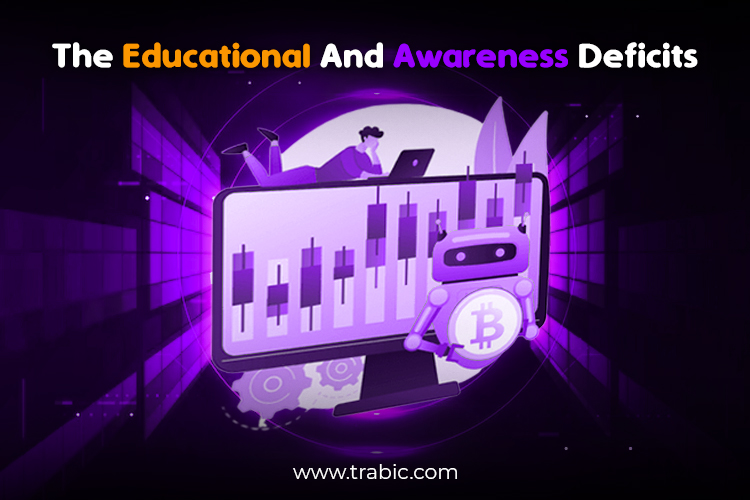Bitcoin’s trailblazing digital currency has captured the attention and curiosity of individuals worldwide since its inception in 2009. As we embark on a new year, exploring the noteworthy aspects that shape Bitcoin’s landscape in 2023 is essential. However, it is also crucial to acknowledge that despite its popularity, a significant lag exists in understanding this revolutionary technology’s intricacies. Remarkable milestones and transformative developments have marked Bitcoin’s journey.
In recent years, we have witnessed the increasing institutional adoption of Bitcoin, with banks and investment firms recognizing its value as a viable asset class. This institutional interest has not only added credibility to the cryptocurrency market but has also played a significant role in shaping its future trajectory. Moreover, governments worldwide have started formulating regulations to govern cryptocurrencies, including Bitcoin. Regulatory clarity is critical in driving wider adoption and trust in the crypto space.
Staying informed about the evolving regulatory landscape is crucial for individuals seeking to navigate the realm of Bitcoin in 2023. Furthermore, the financial infrastructure supporting Bitcoin has undergone significant enhancements. The availability of robust custodial solutions, decentralized exchanges, and scalability solutions has made Bitcoin more accessible and user-friendly than ever before. These advancements can attract a broader audience and drive mainstream adoption in the coming years.
However, despite the remarkable progress and increasing popularity of Bitcoin, there still needs to be a gap in understanding its true nature and potential. This understanding lag can be attributed to several factors. Firstly, Bitcoin’s market volatility continues to be a prominent characteristic that intrigues and concerns investors. The wild price swings often driven by speculative trading activities can make it challenging to grasp Bitcoin’s actual value and long-term potential.
Additionally, the complex nature of Bitcoin’s underlying technology, blockchain, coupled with technical jargon, can overwhelm newcomers. The lack of educational resources simplifying these concepts and bridging the knowledge gap further contributes to the understanding lag. As we navigate the world of Bitcoin in 2023, examining the noteworthy aspects that shape its ecosystem is essential.
However, we must also address the existing understanding lag and work towards educating ourselves and others about this transformative technology. By gaining a deeper understanding of Bitcoin’s nuances and staying informed about its developments, we can make informed decisions and fully embrace its potential to reshape our financial future.
The Maturing Bitcoin Ecosystem
The evolution of the Bitcoin ecosystem has been nothing short of extraordinary. As we find ourselves in 2023, observing the notable aspects that have emerged within this maturing digital landscape is fascinating. The pioneering cryptocurrency that sparked a global revolution has transcended its humble beginnings to become a force to be reckoned with in finance and technology. The interplay between innovation and adaptation has yielded a complex tapestry of advancements, and comprehending these intricacies is paramount in grasping the true essence of Bitcoin’s present state.
Thus, delving into the noteworthy aspects of Bitcoin in 2023 is a captivating exploration into the ongoing narrative of decentralization, institutional adoption, and the potential ramifications. Embarking on this journey of understanding, we unravel the intricacies of the maturing Bitcoin ecosystem and decipher the key elements that have solidified its prominence on the global stage.
The maturing Bitcoin ecosystem is a testament to the growing acceptance and recognition of Bitcoin as a legitimate asset class. One of the most significant developments in recent years has been the increasing institutional adoption of Bitcoin. Traditional financial institutions, including banks and investment firms, have started to recognize the value and potential of Bitcoin as a store of value and a hedge against inflation.
This institutional interest has brought newfound credibility to the cryptocurrency market, attracting more investors and providing stability to the ecosystem. Several factors have driven the institutional adoption of Bitcoin. Firstly, institutions have witnessed the impressive price performance of Bitcoin over the years, with significant returns on investment. This has sparked curiosity and prompted them to explore the potential benefits of adding Bitcoin to their portfolios.
Additionally, the growing demand from clients and customers for cryptocurrency exposure has pushed institutions to offer Bitcoin-related products and services. Another noteworthy aspect of the maturing Bitcoin ecosystem is worldwide regulatory developments. Governments increasingly acknowledge the importance of regulating cryptocurrencies to protect investors, prevent money laundering, and promote market integrity. As a result, regulatory frameworks specific to cryptocurrencies, including Bitcoin, are being established.

These regulations bring clarity and legitimacy to the crypto space, making it more attractive for institutional investors who seek regulatory compliance and oversight. The improvements in the financial infrastructure supporting Bitcoin have also played a significant role in its maturation. In the early days of Bitcoin, the need for more secure custodial solutions and reliable exchanges hindered mainstream adoption.
However, over time, there have been remarkable advancements in these areas. Custodial solutions have evolved to provide robust security measures for storing Bitcoin, giving institutional investors the confidence to enter the market. Additionally, the emergence of decentralized exchanges has given users more control over their funds, reducing reliance on centralized intermediaries and enhancing security. Scalability has been a longstanding challenge for Bitcoin but is gradually being addressed.
Solutions like the Lightning Network aim to improve transaction speed and reduce fees, making Bitcoin more practical for everyday transactions. These scalability enhancements make Bitcoin more user-friendly and facilitate its use as a medium of exchange and a store of value. As the Bitcoin ecosystem matures, individuals and investors must stay informed and adapt to the changing landscape.
Understanding the implications of institutional adoption, regulatory developments, and financial infrastructure enhancements is vital for making informed decisions and maximizing the potential benefits of Bitcoin. Institutions’ increasing recognition and acceptance of Bitcoin validate its long-term viability and the potential for further growth. The maturing Bitcoin ecosystem is characterized by increasing institutional adoption, regulatory developments, and advancements in financial infrastructure.
Accessing traditional financial organizations into the cryptocurrency market brings credibility and stability. Regulatory frameworks contribute to broader adoption and trust, while improvements in custodial solutions, decentralized exchanges, and scalability enhance accessibility and user-friendliness. As Bitcoin continues to evolve, it is essential to keep a close eye on these noteworthy aspects and adapt to the changing dynamics of the cryptocurrency landscape.
Bitcoin’s Market Volatility and Its Implications
Bitcoin’s meteoric rise in popularity has been matched only by its extraordinary market volatility, which has captivated investors and skeptics alike. Since its inception, Bitcoin has experienced dizzying price fluctuations, swinging from astonishing highs to alarming lows in days. While intimidating to some, this inherent volatility holds profound implications for the cryptocurrency ecosystem and the global financial landscape.
As we delve into 2023, exploring the noteworthy aspects surrounding Bitcoin’s current state and its implications for the future becomes crucial. Understanding the intricate nature of Bitcoin’s market volatility is not only a means of deciphering its enigmatic behavior but also a key to unlocking the potential opportunities and risks that lie ahead.
Bitcoin’s market volatility is a characteristic that has both captivated and perplexed investors since its inception. The price of Bitcoin can experience substantial fluctuations in relatively short periods, which can be attributed to various factors within the cryptocurrency market. One key aspect influencing Bitcoin’s volatility is the interplay between speculation and utility. Speculative trading activities, driven by investors seeking short-term gains, can lead to significant price swings.
As Bitcoin’s popularity and adoption have grown, it has attracted diverse market participants, including retail traders, institutional investors, and even large corporations. The influx of speculative activity can contribute to heightened volatility, as price movements are influenced by market sentiment and short-term trading strategies. However, it is crucial to recognize that Bitcoin’s utility extends beyond speculative trading.
As a decentralized digital currency, Bitcoin offers advantages such as peer-to-peer transactions, borderless payments, and protection against inflation. As the adoption of Bitcoin for real-world use cases increases, its utility value strengthens. This growing utility has the potential to counterbalance the speculative forces and contribute to long-term stability in the price of Bitcoin.

Another factor contributing to Bitcoin’s market volatility is the relative youth and lack of regulation within the cryptocurrency market. Compared to traditional financial markets, the cryptocurrency ecosystem is still nascent, characterized by limited regulatory oversight and transparency. This environment can make the market susceptible to manipulation and price manipulation schemes. Instances of market manipulation, such as pump-and-dump schemes or price manipulation through coordinated trading activities, can create artificial price movements and increase volatility.
Moreover, the lack of transparency, particularly in the operations of cryptocurrency exchanges and the distribution of digital assets, can further exacerbate market uncertainty and contribute to price volatility. Investors are advised to adopt a long-term investment perspective to navigate Bitcoin’s market volatility. Short-term price movements may be unpredictable and subject to market fluctuations, but taking a broader view of Bitcoin’s potential can help mitigate the impact of volatility.
Understanding the underlying fundamentals of Bitcoin, such as its limited supply, decentralized nature, and growing adoption, can deliver a substantial basis for long-term investment strategies. By focusing on the long-term potential of Bitcoin to reshape the financial landscape and disrupt traditional systems, investors can weather short-term price volatility and capture the potential gains over an extended period.
It is crucial to conduct thorough research, stay informed about market trends and developments, and establish a risk management strategy that aligns with one’s investment goals and risk tolerance. Bitcoin’s market volatility is a notable characteristic that stems from various factors, including speculative trading, market manipulation, and the lack of transparency within the cryptocurrency market.
While short-term price movements may be unpredictable, understanding Bitcoin’s utility, taking a long-term investment perspective, and focusing on its underlying fundamentals can help mitigate the impact of volatility and enable investors to embrace the potential benefits of this revolutionary digital asset.
Education and Awareness Gaps
In the rapidly evolving world of cryptocurrencies, education, and awareness gaps surrounding Bitcoin persist despite its growing popularity. These gaps hinder the broader understanding and acceptance of Bitcoin as a legitimate and transformative technology. Several factors contribute to these education and awareness gaps, and addressing them is crucial for widespread adoption and informed decision-making. One of the primary challenges in comprehending Bitcoin is its inherent complexity and technical jargon.
Bitcoin’s underlying technology, blockchain, can be intimidating for newcomers, as it involves cryptographic principles, decentralized consensus mechanisms, and intricate data structures. The terminology associated with Bitcoin, such as private keys, public addresses, and mining, can further add to the confusion. Bridging the knowledge gap requires simplifying these concepts and providing accessible educational resources.
Clear explanations, visual aids, and beginner-friendly tutorials can help individuals grasp the fundamental principles of Bitcoin and its underlying technology. The decentralized qualities of Bitcoin also make it vulnerable to misinformation and scams. With no centralized authority governing Bitcoin transactions, there is a higher risk of fraudulent activities and misleading information. Scammers often exploit the lack of knowledge among users, promoting fraudulent investment schemes, phishing attacks, or fake wallets.
Educating users about best practices for securing their Bitcoin holdings, identifying potential scams, and verifying reliable sources of information is crucial for protecting them from financial losses and potential risks. Raising awareness about security measures, such as using hardware wallets, two-factor authentication, and researching reputable crypto platforms, can empower users to navigate the Bitcoin ecosystem safely.
The lack of mainstream adoption of Bitcoin contributes to the education and awareness gaps. While Bitcoin has gained significant traction and acceptance in certain circles, its concepts and usage still need to be familiar to many. For a broader understanding, it is vital to encourage and facilitate the mainstream adoption of Bitcoin.

As more businesses and individuals embrace Bitcoin for transactions, investment, and other use cases, familiarity with the technology will increase. Collaborative efforts between the cryptocurrency industry, educational institutions, and regulatory bodies can promote initiatives to educate the general public about Bitcoin’s benefits, potential risks, and practical applications. Furthermore, efforts should be made to integrate Bitcoin education into school curricula and professional development programs.
Future generations will better understand its concepts and implications by introducing Bitcoin-related topics and blockchain technology early. Similarly, organizations and industry professionals can organize workshops, webinars, and conferences to disseminate knowledge and promote discussions about Bitcoin and its impact on various sectors. Education and awareness gaps hinder the understanding and adoption of Bitcoin. The complexity and technical jargon associated with Bitcoin and its vulnerability to misinformation and scams pose significant challenges.
Additionally, the lack of mainstream adoption limits exposure and familiarity with the technology. Addressing these gaps requires simplifying concepts, promoting security measures, fostering mainstream adoption, and integrating Bitcoin education into formal and informal learning channels. By bridging these gaps, individuals can make informed decisions, confidently navigate the Bitcoin ecosystem, and harness the potential of this transformative digital asset.
Education and awareness gaps have become critical concerns that directly influence our understanding of emerging technologies and their implications. One noteworthy aspect that demands our attention in 2023 is the remarkable rise of Bitcoin, a decentralized cryptocurrency that has captivated the imagination of both investors and tech enthusiasts alike.
However, despite its growing popularity, a significant disparity in knowledge and awareness about Bitcoin persists, contributing to a widening gap between those who comprehend its potential and those who need to be made aware of its transformative power. Thus, it is imperative to delve into the intricate nuances of Bitcoin, unraveling its multifaceted nature and shedding light on its implications, to bridge this educational divide and ensure a more inclusive and informed future for all.
Conclusion
In conclusion, Bitcoin’s journey in 2023 encompasses various noteworthy aspects and challenges. As cryptocurrency matures, it experiences both positive advancements and persistent hurdles. The increasing institutional adoption of Bitcoin, driven by its value as an asset class, brings credibility and stability to the market. However, regulatory developments remain a critical factor in shaping the future of Bitcoin, and staying informed about evolving regulations is essential.
Furthermore, the financial infrastructure supporting Bitcoin has significantly enhanced, making it more accessible and user-friendly. The availability of robust custodial solutions, decentralized exchanges, and scalability solutions expands the potential for mainstream adoption. However, alongside these positive developments, education and awareness gaps still need to be addressed. The complexity and technical jargon associated with Bitcoin’s underlying blockchain technology pose challenges for newcomers.
Simplifying these concepts and providing accessible educational resources can bridge the knowledge gap and empower individuals to understand better and navigate the Bitcoin ecosystem. Additionally, efforts to educate users about best practices and security measures and avoid scams are crucial in ensuring their protection within the decentralized nature of Bitcoin. Moreover, the lack of mainstream adoption contributes to Bitcoin’s understanding lag.
By encouraging businesses and individuals to embrace Bitcoin for transactions and other use cases, familiarity with the technology will increase, fostering a broader understanding among the general public. Collaborative efforts are required to overcome these challenges and maximize the potential benefits of Bitcoin.
The cryptocurrency industry, educational institutions, regulatory bodies, and industry professionals should work together to promote initiatives that simplify concepts, raise awareness about security measures, integrate Bitcoin education into formal curricula, and facilitate mainstream adoption. By addressing the education and awareness gaps, individuals can make informed decisions, protect themselves from fraudulent activities, and embrace the transformative potential of Bitcoin. With a better understanding of Bitcoin’s noteworthy aspects, regulatory landscape, market volatility, and the steps needed to bridge the knowledge gap, individuals can confidently navigate the cryptocurrency landscape, ultimately contributing to this groundbreaking technology’s growth and widespread adoption.
